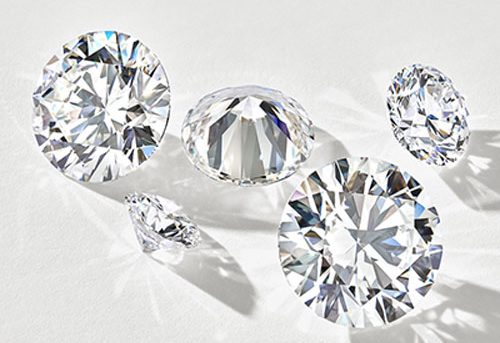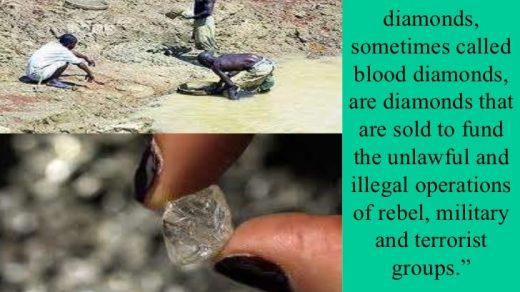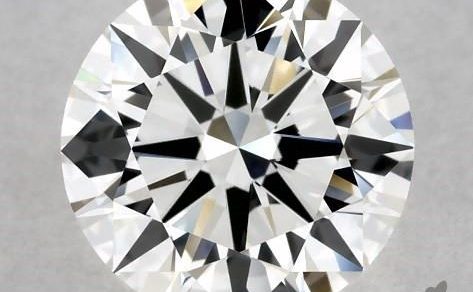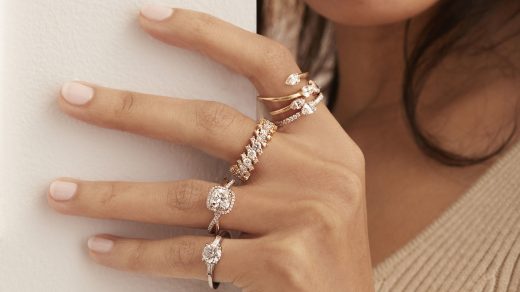In “Exploring the Symbolism of Diamonds in Different Cultures,” we take a fascinating journey into the diverse meanings assigned to diamonds across the globe. As we delve into this captivating subject, you’ll uncover an array of cultural beliefs and customs that have contributed to the symbolism of these precious gemstones. Whether it’s the connection to love and marriage in Western societies or the embodiment of power and wealth in Eastern cultures, diamonds have long held significant meaning in various parts of the world. Join us as we explore the rich tapestry of symbolism surrounding diamonds and gain a deeper understanding of their cultural significance.
Diamonds in Ancient Cultures
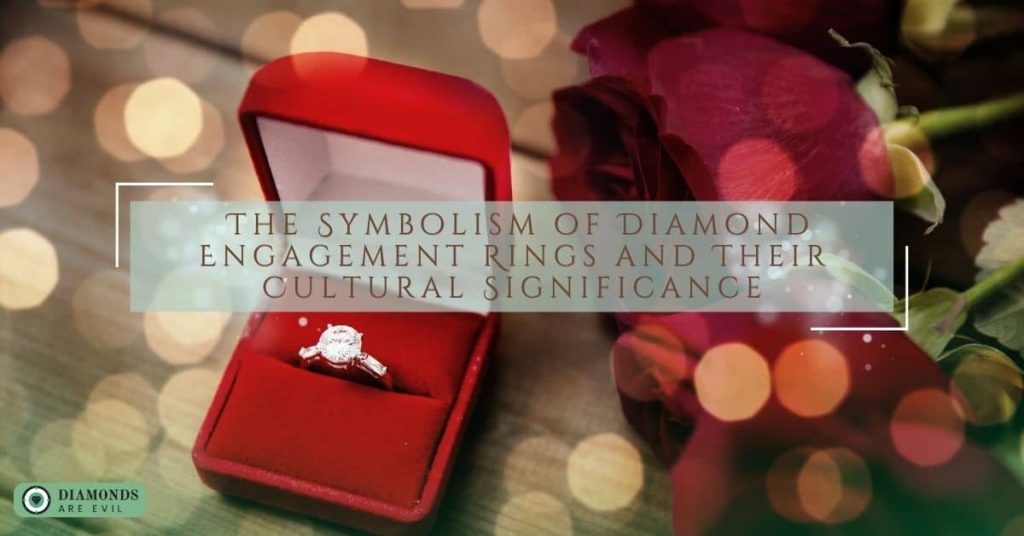
Mesopotamia
In ancient Mesopotamia, diamonds held a significant place in their culture. They were highly valued and considered to be a symbol of power and wealth. The Mesopotamians believed that diamonds were fragments of stars that had fallen to earth, giving them a celestial connection. They used diamonds for various purposes, including adorning royal jewelry, creating intricate decorations, and as talismans for protection and good luck. The Mesopotamians recognized the rarity and beauty of diamonds, making them a coveted gemstone in their society.
Egypt
The ancient Egyptians held diamonds in high regard, viewing them as a symbol of eternal love and strength. Diamonds were often used in their elaborate jewelry designs, including rings, necklaces, and crowns. They believed that diamonds had the power to protect and bring good fortune. Diamonds were also associated with the god Horus, representing his divine strength and clarity. The Egyptians used diamonds not only for adornment but also in religious rituals, where they believed the gems would enhance their connection with the gods. Diamonds played a vital role in ancient Egyptian culture, signifying both beauty and spirituality.
India
Diamonds have a rich history in Indian culture, dating back thousands of years. In ancient India, diamonds were revered as a symbol of strength, courage, and invincibility. They were believed to possess extraordinary powers and were used in various religious ceremonies and rituals. The Indian royalty adorned themselves with exquisite diamond jewelry as a display of their wealth and status. Diamonds were also considered auspicious for weddings, symbolizing the eternal nature of love and commitment. Even to this day, diamonds hold great significance in Indian culture, embodying beauty, spirituality, and prosperity.
China
In ancient China, diamonds were highly valued for their rarity and beauty. They were associated with the concept of immortality and represented the unbreakable connection between heaven and earth. Diamonds were often used as decorative elements in imperial artifacts, such as ceremonial swords and robes, symbolizing power and authority. Chinese folklore also attributed mystical qualities to diamonds, believing they could provide protection against evil spirits and bring good fortune. Diamonds held a prominent place in Chinese culture, serving as powerful symbols of divinity, strength, and good luck.
Diamonds in Western Cultures
Ancient Greece
In ancient Greece, diamonds were highly regarded for their exceptional brilliance and durability. The Greeks believed that diamonds were tears of the gods or fragments of stars, lending them their divine qualities. They associated diamonds with purity, perfection, and power. The ancient Greeks used diamonds in various aspects of their culture, from adorning jewelry to embellishing their statues and pottery. Diamonds symbolized strength, resilience, and eternal love, making them an integral part of Greek mythology and culture.
Roman Empire
The Romans viewed diamonds as a symbol of strength, courage, and invincibility. They believed that diamonds possessed the power to protect against harm and bring victory in battle. Diamonds were highly coveted by Roman emperors and nobles, who adorned themselves with diamond jewelry to showcase their wealth and status. The Romans also believed that diamonds had healing properties and used them in medicinal practices. Diamonds were intricately woven into the fabric of Roman culture, representing power, prestige, and protection.
Middle Ages
During the Middle Ages, diamonds acquired religious significance in Western cultures. They were associated with divine attributes such as purity, spirituality, and enlightenment. Diamonds were used in religious art and jewelry, particularly in Christian iconography, to represent the radiance of God’s love and the purity of the soul. Diamonds were also highly sought after by the aristocracy as symbols of wealth and nobility. Their rarity and beauty made them highly prized possessions, often passed down through generations in noble families. Diamonds held a dual role in the Middle Ages, as both sacred symbols and status symbols.
Renaissance
In the Renaissance period, diamonds became highly fashionable and sought after by the European elite. They were seen as a symbol of wealth, social status, and refined taste. Diamonds were prominently featured in Renaissance art and jewelry, adorning crowns, necklaces, and brooches. The beauty and brilliance of diamonds were admired for their ability to capture and reflect light. The Renaissance marked a time of renewed interest in classical art and culture, and diamonds played a significant role in this revival, embodying elegance, sophistication, and luxury.
Diamonds in Eastern Cultures
Japan
In traditional Japanese culture, diamonds symbolize purity, strength, and resilience. They are considered a sacred gemstone and are often used in religious and ceremonial contexts. Diamonds have a deep spiritual significance in Japanese culture and are believed to embody the energy of the sun, providing clarity and enlightenment. They are also associated with the virtue of loyalty and are sometimes given as gifts to symbolize eternal love and commitment. Diamonds hold a special place in Japanese culture, representing both beauty and spiritual enlightenment.
Korea
In Korean culture, diamonds have long been treasured as a symbol of prosperity and good fortune. They are associated with wealth, success, and abundance. Diamonds are believed to bring luck and positive energy, and they are often incorporated into jewelry and accessories. In Korean weddings, diamonds are often given as gifts to symbolize a blessed union and a prosperous future. The sparkling brilliance of diamonds captures the Korean belief in the power of positive energy and the potential for great success.

Thailand
Diamonds have a significant cultural significance in Thailand, known as the “Land of Gems.” They are highly prized and often celebrated in Thai traditions and ceremonies. Thai folklore and mythology attribute mystical properties to diamonds, associating them with luck, protection, and warding off evil spirits. Diamonds are also deeply connected to Thai Buddhism, symbolizing purity, clarity, and enlightenment. Thai artisans are renowned for their intricate diamond jewelry designs, showcasing the beauty and craftsmanship that have become synonymous with Thai culture.
Indonesia
In Indonesian culture, diamonds are regarded as a symbol of status and prestige. They are often associated with royalty and the upper class. Diamonds hold an exquisite beauty that is highly appreciated in Indonesian society. They are used in traditional jewelry pieces, such as crowns and brooches, as well as modern designs. Diamonds are gifted on special occasions, representing love, commitment, and appreciation. In Indonesia, diamonds are considered a luxury item and a reflection of one’s social standing.
Diamonds in African Cultures
South Africa
South Africa is renowned for its rich diamond deposits, and diamonds hold great cultural significance in the country. Diamonds have played a prominent role in South Africa’s history, both in ancient times and during the diamond rush in the late 19th century. Diamonds are associated with beauty, strength, and endurance in South African culture. They are often used in traditional African jewelry and are valued for their natural brilliance and durability. Diamonds also represent the economic prosperity and natural resources of South Africa, making them a symbol of national pride.
Botswana
Diamonds have transformed Botswana’s economy and are deeply intertwined with the country’s culture and identity. Botswana is one of the world’s largest diamond producers, and diamonds have contributed significantly to the nation’s wealth and development. In Botswana, diamonds are associated with hope, progress, and economic empowerment. The diamond industry has created jobs, funded infrastructure projects, and improved the quality of life for many Batswana people. Diamonds are a vital part of Botswana’s cultural heritage, symbolizing the country’s resilience, prosperity, and bright future.
Sierra Leone
In Sierra Leone, diamonds hold a complex and bittersweet significance. The country has a long history of diamond mining, and diamonds have played a significant role in its economy. However, Sierra Leone also experienced the dark side of the diamond trade, with the infamous “blood diamonds” fueling a devastating civil war. Diamonds in Sierra Leone are a reminder of the tragic past and the need for responsible diamond mining practices. The country has made significant progress in ensuring that diamonds contribute to sustainable development and peace-building efforts. Diamonds in Sierra Leone carry the weight of history and hope for a better future.

Democratic Republic of Congo
The Democratic Republic of Congo (DRC) is another African country with a complicated relationship with diamonds. The DRC is rich in mineral resources, including diamonds, but the diamond trade has fueled conflict and human rights abuses in the region. However, efforts are being made to establish responsible and ethical diamond mining practices in the country. Diamonds in the DRC represent the potential for economic development and social progress if managed sustainably and responsibly. They also remind us of the need to address the challenges of the diamond industry and ensure fair and equitable benefits for the people of the DRC.
Diamonds in Native American Cultures
Navajo Tribe
In Navajo culture, diamonds are known as “the rock that flashes fire.” They are considered a sacred stone and are used in traditional Navajo jewelry and ceremonies. Diamonds symbolize clarity of thought, strength, and protection. The Navajo people have a deep connection to the land and nature, and diamonds are believed to harness the energy and power of the earth. They are often used in intricate silver and turquoise jewelry designs, reflecting the beauty and spirituality of the Navajo culture.
Inuit Culture
In Inuit culture, diamonds are deeply connected to the concept of ice and the Arctic landscape. They symbolize purity, strength, and resilience in the face of adversity. Diamonds are believed to contain the wisdom of the ancestors and are used in spiritual ceremonies and rituals. Inuit artisans create exquisite diamond jewelry, incorporating natural elements such as bone, horn, and stone. Diamonds serve as a reminder of the harmony between humans and nature, reflecting the Inuit’s deep respect for the environment and their cultural heritage.
Cherokee Nation
In Cherokee culture, diamonds are associated with elegance, beauty, and spiritual power. They are believed to possess healing properties and are used in traditional Cherokee medicine. Diamonds are also used in storytelling, representing the sparkling tears of the stars and the connection between heaven and earth. They are incorporated into jewelry designs, such as necklaces and earrings, and are often passed down through generations as family heirlooms. Diamonds hold a special place in Cherokee traditions, embodying both natural beauty and spiritual significance.
Hopi Tribe
For the Hopi tribe of Native Americans, diamonds hold a sacred and spiritual significance. They are believed to represent the power of the sun and are used in religious ceremonies and rituals. Diamonds symbolize clarity of thought, purity, and enlightenment. They are often incorporated into intricate silver and turquoise jewelry, expressing the Hopi’s deep connection to their cultural heritage. Diamonds are used as talismans for protection and as a conduit for spiritual energy. The Hopi people regard diamonds as a precious gift from the earth, embodying both physical and spiritual beauty.
Diamonds as Spiritual Symbols

Love and Relationships
Throughout history, diamonds have been associated with love and relationships. They are often used in engagement rings, symbolizing eternal love and commitment. Diamonds are believed to enhance the bond between partners and bring joy and passion to relationships. They also represent purity and fidelity, serving as a reminder of the strength and endurance of love. Diamonds hold a deep spiritual meaning in the context of love, embodying the beauty, strength, and everlasting nature of romantic relationships.
Protection and Healing
Diamonds have been regarded as protective talismans in many cultures. They are believed to ward off negative energy, evil spirits, and physical harm. Diamonds symbolize strength, resilience, and the power to overcome obstacles. They are associated with clarity of thought and emotional healing, bringing balance and harmony to one’s life. Diamonds are often used in meditation and spiritual practices to promote inner peace and well-being. Diamonds serve as guardians, guiding and protecting individuals on their spiritual journey.
Prosperity and Wealth
Diamonds have long been associated with prosperity and wealth. They are viewed as symbols of abundance, success, and financial prosperity. In many cultures, diamonds are believed to attract good fortune and enhance one’s chances of success in business and material endeavors. Diamonds represent the inherent value and rarity of precious resources, making them a tangible symbol of wealth. People often wear diamond jewelry or keep diamonds in their homes or workplaces as a reminder of their desire for prosperity and financial well-being.
Purity and Innocence
Diamonds are often associated with purity and innocence. Their remarkable clarity and brilliance are seen as representations of the uncorrupted soul. Diamonds symbolize moral virtue, honesty, and transparency. They are often used in religious ceremonies, where they serve a purifying role. Diamonds also represent the untarnished beauty of nature and the innate goodness of the human spirit. Diamonds remind us of the importance of maintaining purity of thought and action in our daily lives, encouraging us to strive for integrity and moral purity.
Diamonds as Status Symbols
Royal Connections
Diamonds have long been associated with royalty and the aristocracy. They have adorned the crowns, tiaras, and jewelry of kings, queens, and nobles throughout history. Diamonds symbolize regality, power, and prestige. They serve as visual indicators of one’s social standing and royal lineage. The association between diamonds and royalty has persisted through the ages, creating a lasting link between diamonds and the highest echelons of society. Diamonds represent the inherent value and grandeur associated with nobility and royal heritage.

Nobility and Aristocracy
In addition to royalty, diamonds were highly coveted by the nobility and the aristocracy. They were seen as a reflection of one’s status and wealth. Diamonds adorned the fashionable attire and lavish jewelry of the upper classes. The aristocracy displayed their social standing by wearing diamonds and surrounding themselves with diamond-studded luxury items. Diamonds represented exclusivity, refinement, and privileges associated with elite society. The allure of diamonds captivated the nobility and aristocracy, making them a coveted status symbol.
Middle Class Significance
Diamonds have become more accessible to the middle class over time. The emerging middle class aspired to possess diamonds as a symbol of their social and economic advancement. The ability to afford diamond jewelry became an indicator of upward mobility and success. Diamonds represented the achievement of financial stability and the fulfillment of dreams. The middle class embraced the beauty and symbolism of diamonds, recognizing their value as a tangible representation of personal accomplishment.
Consumer Culture
In modern times, diamonds have become ingrained in consumer culture. They are heavily marketed as symbols of love, luxury, and social status. Diamonds are prominently featured in advertisements, fashion magazines, and popular culture. They have become synonymous with indulgence, exclusivity, and success. Diamonds serve as status symbols in a consumer-driven society, where ownership of luxury items is often associated with personal worth and achievement. The allure of diamonds in contemporary culture reflects our desire for recognition, prestige, and the affirmation of a luxury lifestyle.
Diamonds in Folklore and Mythology
Magical Powers and Talismans
Throughout folklore and mythology, diamonds have been attributed with magical powers and talismanic properties. They are believed to possess the ability to grant wishes, provide protection, and promote spiritual growth. In many cultures, diamonds are associated with the supernatural, believed to bring good luck, ward off evil spirits, and provide guidance in times of uncertainty. Diamonds are used as powerful tools for manifestation, helping individuals harness their intentions and bring their desires into reality. The enchanting allure of diamonds in mythology is a testament to their enduring mysticism.
Cursed Diamonds and Tragic Tales
Diamonds have also been associated with tragedy and curses in folklore. Tales of cursed diamonds and their ill-fated owners have captivated imaginations for centuries. These stories warn of the dark side of material wealth and the consequences of greed. Cursed diamonds are believed to bring misfortune, tragedy, and even death to those who possess them. This darker aspect of the diamond’s folklore serves as a cautionary tale about the potential dangers of wealth, power, and unchecked desires.
Divine and Supernatural Associations
Diamonds have long been connected to the divine and supernatural realms. In many mythological traditions, diamonds are believed to possess the energy of the gods or represent fragments of the stars. They are associated with celestial powers, enlightenment, and the divine essence. Diamonds have been revered as sacred gemstones, used in religious ceremonies, and believed to hold spiritual energy. Their radiance and brilliance symbolize the transcendent and awe-inspiring qualities of the divine.
Transformation and Enlightenment
Diamonds are often regarded as symbols of transformation and enlightenment. They are believed to facilitate personal growth, clarity of thought, and spiritual awakening. Diamonds represent the transformative journey from rough to polished, from potential to actualization. They symbolize inner strength, resilience, and the ability to shine even in the face of adversity. Diamonds inspire individuals to seek enlightenment and transcend limitations, encouraging them to embark on a path of self-discovery and self-actualization.
Diamonds in Traditional and Bridal Customs
Engagement Rings
Diamond engagement rings have become a widely recognized tradition in many cultures. The diamond engagement ring symbolizes love, commitment, and the promise of marriage. The giving of a diamond ring represents the intention to build a life together and create a lasting bond. The diamond’s durability and everlasting beauty parallel the endurance and strength of the couple’s love. Engagement rings are treasured heirlooms passed down through generations, signifying the continuation of love and family legacy.
Wedding Ceremonies
Diamonds play a significant role in wedding ceremonies and traditions. They are often featured in wedding jewelry worn by both the bride and groom. Diamonds symbolize purity, beauty, and the eternal nature of love. They serve as a reminder of the couple’s commitment to cherish and honor each other throughout their journey together. Diamond accents are often incorporated into wedding bands, adding a touch of sparkle and elegance. Diamonds infuse weddings with a sense of celebration and refinement, reflecting the joyous occasion and the beginning of a new chapter in the couple’s lives.
Anniversary Traditions
Diamonds are often associated with milestone anniversaries, such as the 60th and 75th. These anniversaries are recognized as significant milestones in a couple’s life and are celebrated with diamond gifts. Diamonds symbolize the enduring love and commitment that have withstood the test of time. They serve as a tribute to the couple’s journey of love and the resilience of their relationship. Diamond anniversary gifts are cherished symbols of appreciation, gratitude, and the shared memories of a lifetime.
Inheritance and Family Legacy
Diamonds are passed down through generations as treasured family heirlooms and symbols of the family’s legacy. They embody the stories, values, and memories of previous generations. Diamonds are often inherited to commemorate important life events, such as weddings, graduations, or the birth of a child. They represent the unconditional love, wisdom, and guidance of ancestors. Inherited diamonds serve as a connection to the past and a link between family members, carrying forward cherished traditions and creating new ones.
Diamonds in Modern Pop Culture
Film and Television
Diamonds have become a staple in film and television, often featured as central plot elements or as symbols of wealth and glamour. From classic Hollywood films to modern blockbusters, diamonds are portrayed as coveted objects of desire. They represent luxury, power, and an exclusive lifestyle. Diamonds in film and television serve as visual symbols that captivate audiences and contribute to the allure of the characters and their stories.
Songs and Music
Diamonds have inspired many popular songs and lyrics. They are often used as metaphors for love, beauty, and the precious nature of relationships. Diamonds symbolize the lasting quality of emotions and the desire for a love that withstands the test of time. Songs about diamonds evoke a sense of romance, passion, and desire. From country ballads to pop anthems, diamonds in music serve as lyrical expressions of love and a homage to their enduring symbolism.
Fashion and Celebrity
The world of fashion and celebrity has long been intertwined with diamonds. Celebrities often don diamond jewelry on red carpets, award shows, and high-profile events. Diamonds are synonymous with glamour, elegance, and the ultimate in luxury. They are showcased in fashion magazines and celebrity tabloids, setting trends and inspiring jewelry designers. Diamonds play a significant role in both haute couture and everyday fashion, reflecting the desire for personal adornment and self-expression.
Diamond Advertising
Diamond advertising has played a crucial role in shaping the perception and desirability of diamonds in modern culture. Advertisements often depict diamonds as symbols of love, beauty, and social status. They create a romantic narrative around diamonds, emphasizing their rarity, brilliance, and their connection to significant moments in one’s life. Diamond advertisements appeal to emotions and capture the aspiration for a glamorous and luxurious lifestyle. The imagery used in diamond advertising has become deeply ingrained in our collective consciousness, perpetuating the allure and desirability of diamonds.
© 2022-2023 by diamondstudsource. All rights reserved. No part of this document may be reproduced or transmitted in any form or by any means, electronic, mechanical, photocopying, recording, or otherwise, without prior written permission of diamondstudsource.com.

